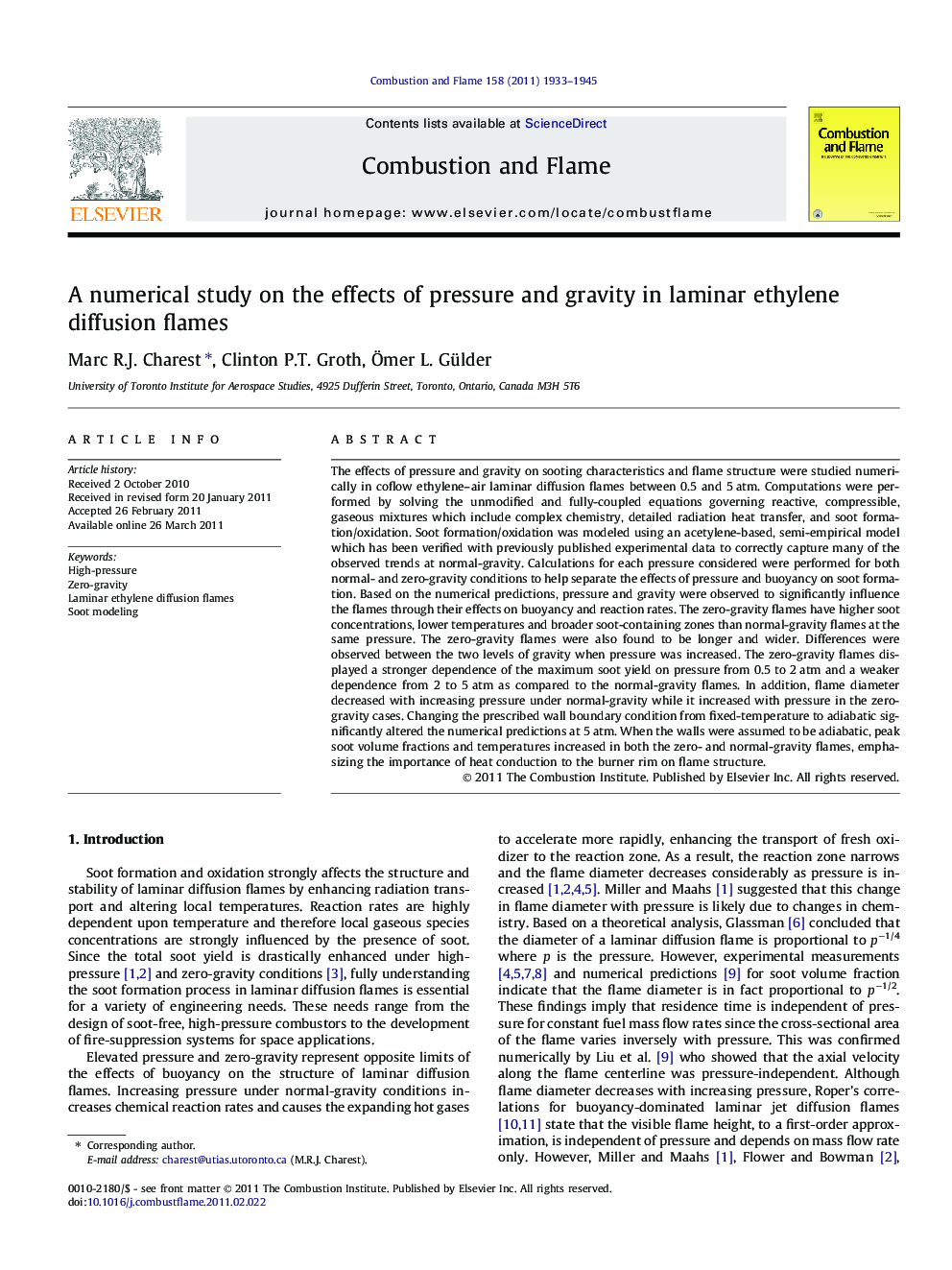| Article ID | Journal | Published Year | Pages | File Type |
|---|---|---|---|---|
| 169423 | Combustion and Flame | 2011 | 13 Pages |
The effects of pressure and gravity on sooting characteristics and flame structure were studied numerically in coflow ethylene–air laminar diffusion flames between 0.5 and 5 atm. Computations were performed by solving the unmodified and fully-coupled equations governing reactive, compressible, gaseous mixtures which include complex chemistry, detailed radiation heat transfer, and soot formation/oxidation. Soot formation/oxidation was modeled using an acetylene-based, semi-empirical model which has been verified with previously published experimental data to correctly capture many of the observed trends at normal-gravity. Calculations for each pressure considered were performed for both normal- and zero-gravity conditions to help separate the effects of pressure and buoyancy on soot formation. Based on the numerical predictions, pressure and gravity were observed to significantly influence the flames through their effects on buoyancy and reaction rates. The zero-gravity flames have higher soot concentrations, lower temperatures and broader soot-containing zones than normal-gravity flames at the same pressure. The zero-gravity flames were also found to be longer and wider. Differences were observed between the two levels of gravity when pressure was increased. The zero-gravity flames displayed a stronger dependence of the maximum soot yield on pressure from 0.5 to 2 atm and a weaker dependence from 2 to 5 atm as compared to the normal-gravity flames. In addition, flame diameter decreased with increasing pressure under normal-gravity while it increased with pressure in the zero-gravity cases. Changing the prescribed wall boundary condition from fixed-temperature to adiabatic significantly altered the numerical predictions at 5 atm. When the walls were assumed to be adiabatic, peak soot volume fractions and temperatures increased in both the zero- and normal-gravity flames, emphasizing the importance of heat conduction to the burner rim on flame structure.
